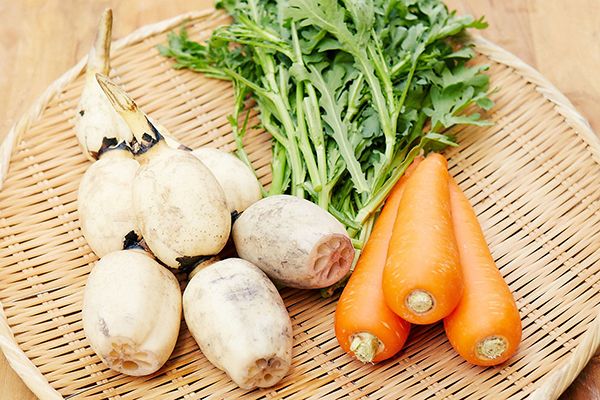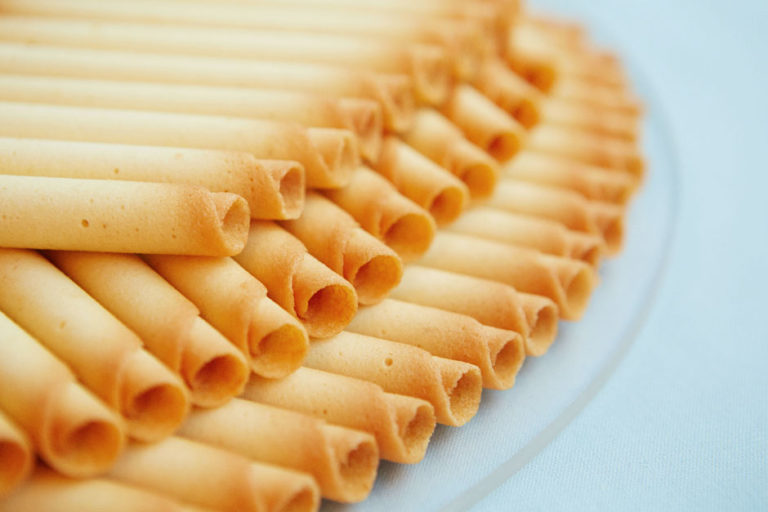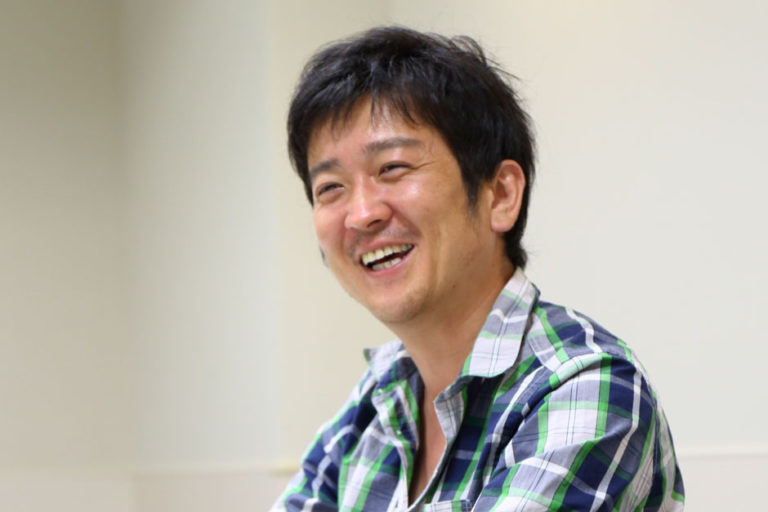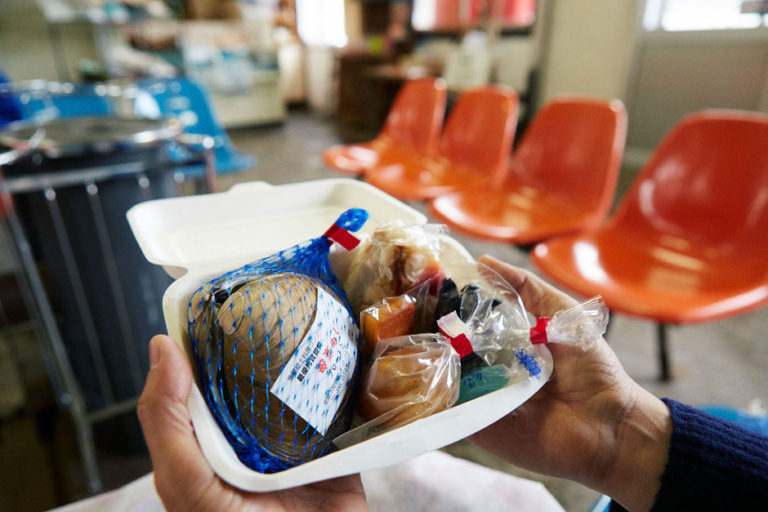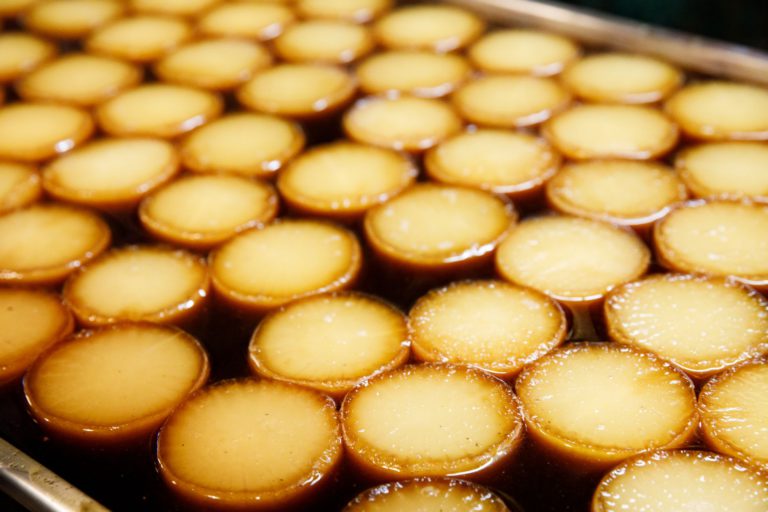Quality lotus roots grown in the vast low-lying wetlands of Lake Kasumigaura

Lotus root production around Lake Kasumigaura started about 40 years ago in the 1970s. While the government implemented an agricultural policy to adjust the production of rice, people in the Kasumigaura area looked for superior crops that would replace rice, and chose lotus roots as this was the best match for Kasumigaura’s low-lying wetlands.
White delicate lotus roots, fine in texture
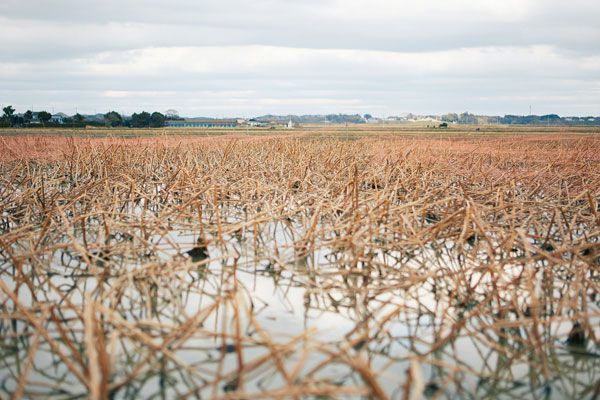
Lotus roots around Lake Kasumigaura in Ibaraki Prefecture are harvested between July and March. Every year, at the time of harvest, all lotus stems and leaves above the water of Lake Kasumigaura are chopped down to stop the lotuses from growing further.
The lotus roots, which grow underground, become dormant in the mud, and slowly accumulate starch from summer to winter?meaning the lotuses harvested in the same area can have different tastes depending on when they are harvested. The lotuses harvested in the summer are said to be juicy and have an enjoyable, crispy texture, while they become starchier in the winter with an enjoyable fluffy texture.
We visited Renkon Sankyodai, a company which grows and sells lotus roots in Ukishima, located in the south of Lake Kasumigaura in Inashiki, Ibaraki Prefecture. As the name (which means “three brothers of lotus roots” in Japanese) suggests, the company is in agriculture and run primarily by Takao, the eldest son, Masaharu, the second eldest son, and Akira, the third eldest son of the Miyamoto Family.
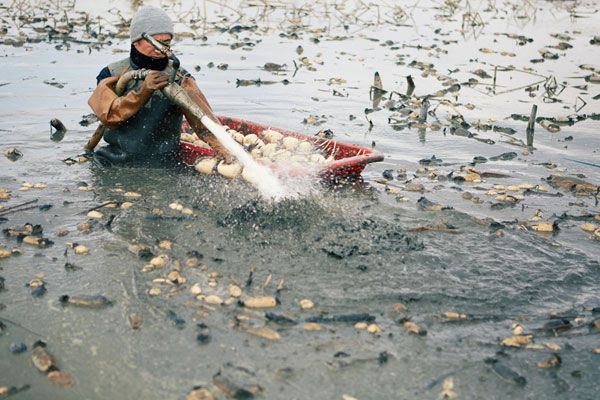
Harvesting lotus roots during the winter starts in the afternoon, as lotus root fields are frozen in the morning.
Lotus root fields are approximately 50-60 cm deep. The men have to work kneeling down in the water?with the water coming up to their chest?while they probe in the mud to find the lotus roots.
They use a water jet to look for lotus roots by hand, and go through the lengthy process of washing off the mud after they harvest the roots so that the uneven skin of lotus roots remains undamaged. Lotus roots shipped according to these careful procedures are not only tasty; their whiteness and beauty also add to their much-prized values.
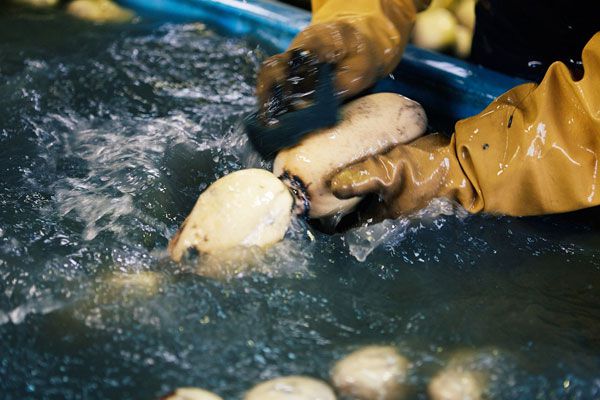
Lotus roots brought into the dispatch area are boxed one by one, after their root hairs have been chopped off and after each one has been washed. At Renkon Sankyodai, lotus roots are harvested and shipped within two days after receiving an order.
Renkon Sankyodai is proud of the quality of their lotus roots. “Lotus roots begin to change color when they come in contact with air. So we shut off the air, put them into airtight bags to keep them fresh, and deliver them fresh in their best condition,” says Takao, CEO and the eldest son of the Miyamoto Family.
Three brothers set up a company and stick to growing a particular kind of lotus roots
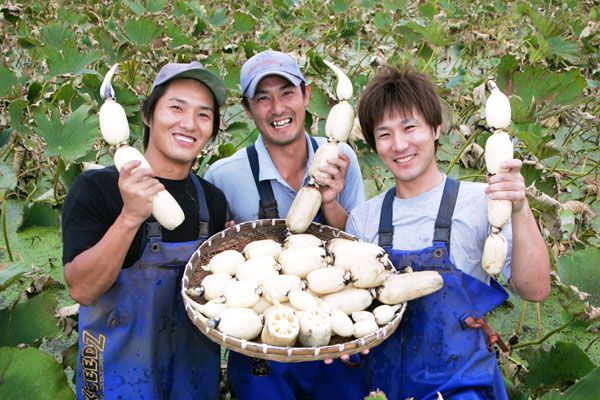
The three brothers of the Miyamoto Family began farming in 2003. Originally they worked in different professions, but decided to go into farming.
They trained for five years under their father’s tutelage?who grew rice and lotus roots. In 2008, driven by a passion for the three of them to build a new form of agriculture together, they took over the lotus root production business from their father and established Miyamoto Kyodai Noen (translated as “Miyamoto Brothers Garden”).
After breaking off from their father, the first thing they engaged in was soil analysis. Their father kept soil in good condition with his senses and experience, but the brothers gathered numerical data to find ways to plant lotuses without them being affected by the climate or individual skills to the extent possible.
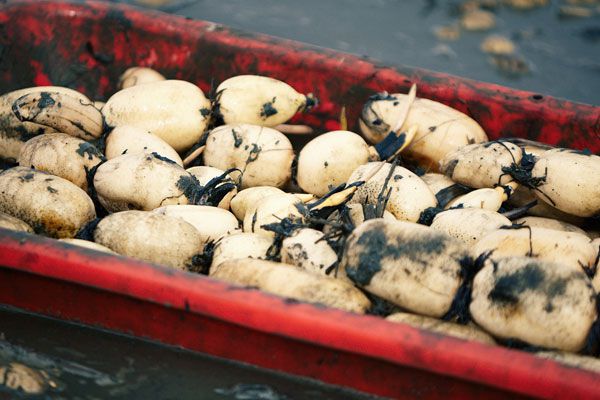
“You say we keep soil in good condition but we only actually provide support to the bacteria in the ground so that it can work to the best of its ability. We feel there is a community within the ground and no specific bacteria will multiply out of proportion. We are working to help the field maintain its original biodiversity of bacteria and build large soil layers,” says Takao.
The well-balanced soil management based on data, called “quality indigenous bacterial culture,” is apparently vital for the three brothers to produce quality lotus roots.
Lotus root varieties have been improved in recent years and there are approximately 50 varieties of lotus roots throughout Japan. Renkon Sankyodai picks and grows approximately five varieties that fit their harvest season and soil quality.
“We pick lotus roots fit for each season and suggest and deliver them to our clients including restaurants. We ask them what size and shape they would prefer and cater to the need of each client. We want more people to know about the depth of delicious taste lotus roots have,” says Takao.
Starting a business towards stable farming

Miyamoto Kyodai Noen became Renkon Sankyodai, a corporation, in 2010.
“We had always felt uneasy about the fact that society saw farming, which was our upbringing, as something hard and dirty. We wanted to prove it isn’t,” says Takao.
One reason the brothers established a company was so that they could hire young people who wanted to go into farming even if they were not from a family of farmers for whom going into farming afresh is often difficult.
Right now, Renkon Sankyodai consists of the three brothers, who are board members, two employees, and five part-time workers, shipping an average of 500 kg of lotus roots a day. Right now Takao is looking to secure and develop human resources. The company is planning to standardize farming procedures and hire more employees who can engage in and monitor the entire production process of lotus roots. If there are more employees, employees can take turns and take days off. They can also produce and harvest more lotus roots, which means farming will be a more stable profession.
Manabu Iinuma, who joined Renkon Sankyodai four years ago, says “at first I pushed myself really hard, thinking it was a test of my strength, but now I know how to go through work each day at a steady pace. The Miyamoto brothers taught me everything about lotus root farming from scratch. I truly feel that lotus root farming is a very rewarding job with lots of expertise.”
While working to develop the company in Japan, Akira, the third son, visits Southeast Asia often to look for new ways of farming.
He is heading towards his dream, as he believes Japan’s production management technology is excellent in many ways?so he wants to branch out into the world, not limiting his work to Japan.
Renkon Sankyodai is taking on the challenge of pioneering the future of agriculture, bringing in more people to work with them. Producing quality lotus roots from the vast low-lying wetlands of Lake Kasumigaura will be something to support that possibility, and their story will appeal to many people in years to come.
Lotus roots from Inashiki City
Source:Takao Miyamoto, CEO, Renkon Sankyodai Co., Ltd.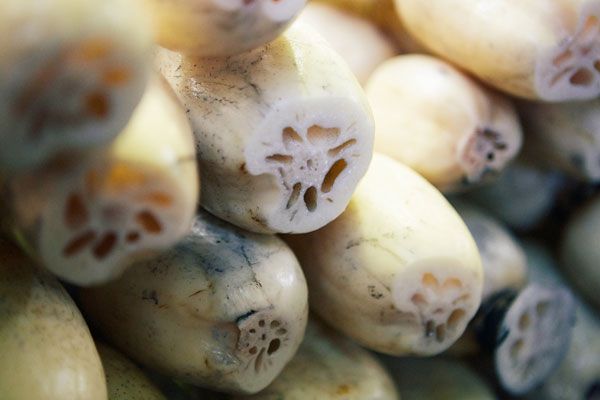
Peak Season
Lotus roots are harvested over a long period of time between July and March, with the peak season in the autumn.
In summer the lotus roots are clear and juicy, and in winter they become milky white, with a fluffy texture. Lotus roots harvested in the autumn are the best as they have a balanced combination of summer and winter tastes and textures.
Tips
Fresh ones without spots because lotus roots begin to change color when they come in contact with air
(however, avoid those that are unnaturally white as they can be bleached).
Make sure to keep them wrapped in plastic wrap at home, to keep away from air.

